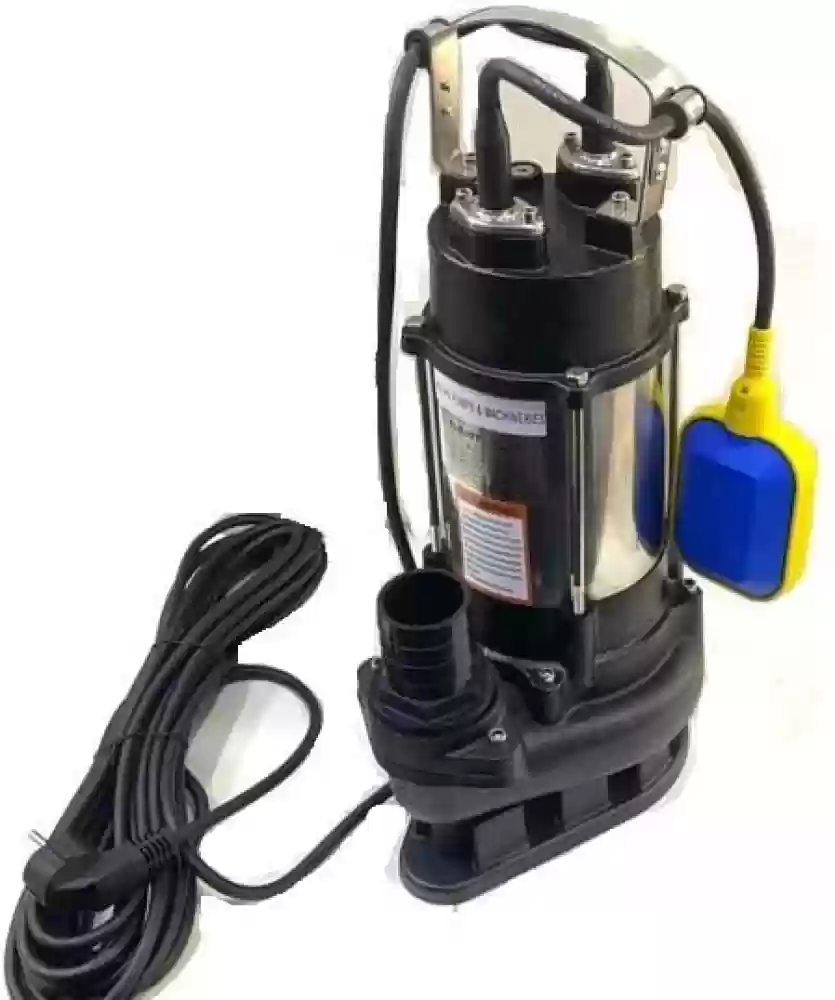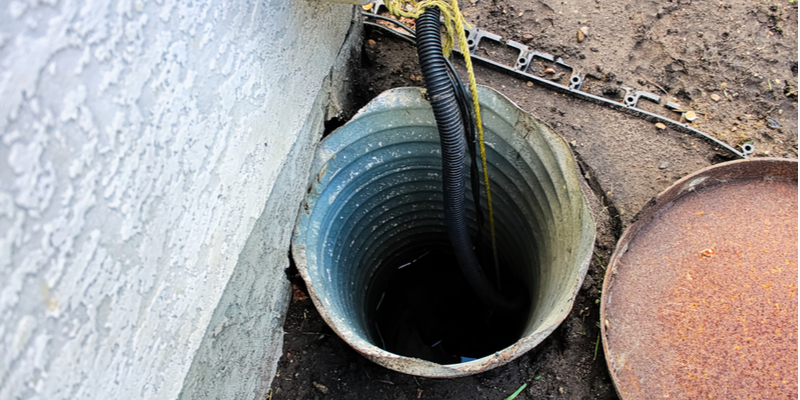The Definitive Guide to Caring for a Sump Pump
The Definitive Guide to Caring for a Sump Pump
Blog Article
What are your insights and beliefs on Keep Your Sump Pump Clean, It'll Keep You Dry?

Sump pumps are essential parts in lots of homes, especially in locations susceptible to flooding or excessive wetness. They aid stop water damages by successfully getting rid of excess water from cellars or crawl spaces. Nevertheless, like any other appliance, sump pumps call for routine maintenance to guarantee they work properly when required the most. Cleansing your sump pump is a vital part of its upkeep, and recognizing just how to do it correctly can save you from expensive fixings and possible catastrophes.
Intro
Keeping a clean sump pump is important for its appropriate performance and durability. Overlooking this crucial job can bring about obstructions, malfunctions, and eventually, water damage to your residential property. For that reason, finding out just how to clean a sump pump is essential for property owners that rely upon these gadgets to maintain their basements dry and protected.
Signs of a Dirty Sump Pump
Recognizing when your sump pump requires cleansing is vital for preventing prospective malfunctions. Some common signs that suggest a filthy sump pump include odd noises during procedure, decreased water flow, and visible particles in the pit. If you notice any of these signs and symptoms, it's important to clean your sump pump immediately to prevent any additional concerns.
Planning for Cleaning
Prior to you start cleaning your sump pump, it's essential to take some safety precautions. Beginning by turning off the power to the pump to prevent any type of electrical crashes. Additionally, use appropriate protective gear, such as gloves and goggles, to secure on your own from dirt, particles, and prospective pathogens.
Comprehending the Sump Pump
Before diving into the cleaning procedure, it's essential to have a standard understanding of how a sump pump functions. Generally set up in a pit or basin listed below the basement floor, a sump pump consists of several vital elements, including a pump, a float button, and a discharge pipe. When water builds up in the pit, the float switch turns on the pump, which after that pumps the water out with the discharge pipe, away from the building's foundation.
Detailed Guide to Cleaning Up a Sump Pump
Turning off the Power
Begin by separating the power supply to the sump pump to prevent any type of crashes while cleansing.
Looking For Proper Performance
Before reinstalling the pump, carry out a fast examination to make sure that the float button activates the pump correctly. Pour some water into the sump pit and observe the pump's operation. If every little thing is operating properly, you can reconstruct the pump and reconnect the power supply.
Eliminating Particles and Dust
Make use of a pail or a scoop to remove any visible debris, dust, or sediment from the sump pit. Dispose of the debris appropriately to prevent it from obstructing the pump or the discharge pipe.
Cleaning up the Pump and Float Switch
Once the pit is clear of particles, very carefully eliminate the pump from the pit. Inspect the pump and the float button for any type of indications of damages or wear. Make use of a soft brush or towel to clean the surfaces and eliminate any kind of accumulated grime.
Flushing the System
After cleaning up the pump and float button, purge the sump pit with clean water to eliminate any kind of continuing to be dirt or debris. This will aid guarantee that the pump operates smoothly and efficiently.
Maintenance Tips to Maintain Your Sump Pump Clean
In addition to routine cleaning, there are several upkeep pointers you can comply with to keep your sump pump in ideal problem:
Conclusion
Cleansing your sump pump is an essential aspect of its upkeep and guarantees that it operates successfully when you need it one of the most. By complying with the actions detailed in this guide and integrating normal maintenance into your routine, you can extend the life expectancy of your sump pump and secure your home from water damage.
6 STEPS ON HOW TO CLEAN A SUMP PUMP PROPERLY
UNDERSTANDING SUMP PUMPS
Your sump pump plays a crucial role in protecting your home by managing and removing excess water. It primarily functions as a “shield”, guarding your basement against the damaging effects of water accumulation. The pump is housed in a sump pit in the lowest part of your basement, and its job is to pump out any water that collects there.
During heavy rainfalls or when snow melts rapidly, water can infiltrate your basement, posing potential risks like flooding, structural damage, and harmful mold growth. Here, the sump pump springs into action, pumping out the intruding water and directing it away from your home.
SAFETY FIRST
Before cleaning, remember to prioritize safety. Disconnect the sump pump from the power source to prevent any accidental electric shocks. Also, wear sturdy gloves to protect your hands from any sharp or dirty components within the pump.
REMOVE THE SUMP PUMP
After ensuring your safety, the next step is to remove the sump pump from its pit. Doing this might require careful maneuvering as you don’t want to damage any pump components. Once removed, clean the sump pit to remove any accumulated debris or sludge.
INSPECT THE PUMP
Inspect the pump for any visible signs of wear or damage. Check the power cord, float switch, and impeller housing. If any components look worn out or damaged, consider replacing them to ensure optimal performance.
CLEAN THE PUMP
Thoroughly clean the pump with warm, soapy water. Make sure to rid it of any dirt, gravel, or other debris that might impede its performance. You can use a toothbrush to clean the small, hard-to-reach parts of the pump.
REINSTALL THE SUMP PUMP
Reinstall the pump into the sump pit Make sure it’s positioned correctly to remove the water effectively Once it’s back in place, reconnect it to the power source TEST THE PUMP
Finally, pour some water into the pit to ensure the pump works correctly. It should start automatically and begin pumping out the water; if it doesn’t, check the power source and the positioning of the pump.
Remember, while cleaning your sump pump is an essential part of home maintenance, hiring a professional plumber for a thorough inspection and cleaning at least once a year is also important. This will ensure that your pump is in optimal condition, ready to protect your home from potential water damage.
BEST PRACTICES FOR CLEANING SUMP PUMP DISCHARGE PIPES
Regular Inspection: Regularly inspect your discharge pipes, especially during heavy rainfall or snowmelt periods. Look for any signs of blockage or damage. Early detection of problems can prevent serious issues down the line. Periodic Cleaning: Over time, sediment and debris can accumulate in the discharge pipes, impeding the flow of water. Regular cleaning helps keep the pipes clear and functioning efficiently. You can use a high-pressure water jet to effectively clean the pipes. Insulation During Winter: In colder climates, discharge pipes can freeze, blocking the outflow of water. Protect your discharge pipes from freezing temperatures by insulating them with foam pipe insulation. This will ensure the sump pump can continue to discharge water even in freezing conditions. Proper Positioning: The discharge pipe should be positioned to direct water away from your home’s foundation. Improper positioning can lead to water seeping back into the basement. Ensure the pipe is long enough and angled correctly. Installation of a Check Valve: A check valve prevents water from flowing back into your sump pit after the pump has pushed it out. Installing a check valve helps maintain the efficiency of your sump pump and reduces the risk of flooding. Minimize Pipe Turns: Every curve or turn in the discharge pipe can decrease the efficiency of water flow. By minimizing turns and bends in your discharge pipe, you can increase the efficiency of your sump pump. https://www.fullspeedplumbing.com/how-to-clean-a-sump-pump-properly9999/

We were brought to that write-up about How To Effectively Clean A Sump Pump from an acquaintance on our other web property. If you please take the time to distribute this blog if you liked it. I am grateful for your time. Revisit us soon.
Call Today Report this page